Length 5,633 m Successor Mobil | ||
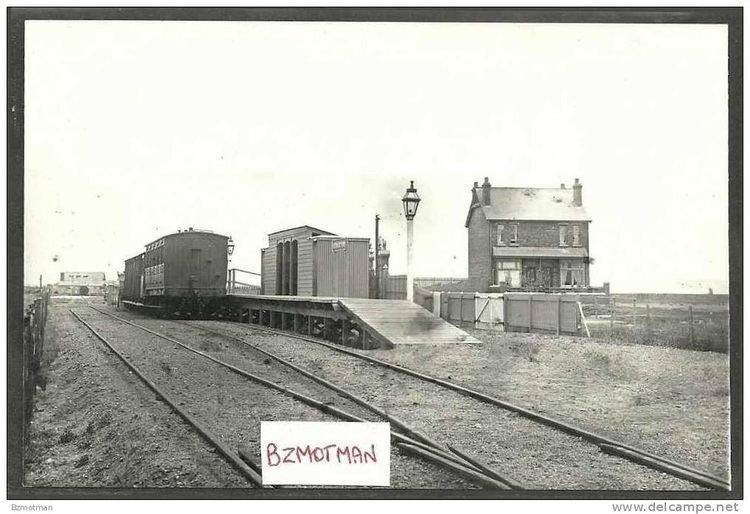 | ||
Dates of operation 10 July 1899–20 September 1971 Track gauge 4 ft 8 ⁄2 in (1,435 mm) | ||
Corringham light railway c1949
The Corringham Light Railway (CLR) in Corringham, Essex, England was incorporated on 10 July 1899 and opened to freight on 1 January 1901, to passengers on 22 June 1901. It closed to passengers on 1 March 1952 and was absorbed into the Mobil Oil Company on 20 September 1971. The railway itself went from an end on junction with the London Tilbury and Southend Railway at Thames Haven to both Corringham and Kynochtown (later Coryton).
Contents
- Corringham light railway c1949
- Overview
- Closure and Remains
- Locomotives
- Rolling stock
- Staff
- Corringham Light Railway Society
- References

Overview

The London, Tilbury and Southend Railway (LTSR)had a branch from Thames Haven Junction, near Stanford-le-Hope, to Thames Haven on the Thames Estuary. It was some 2 3⁄4 miles (4.4 km) long. There was a passenger station at Thames Haven but it closed before the CLR opened.
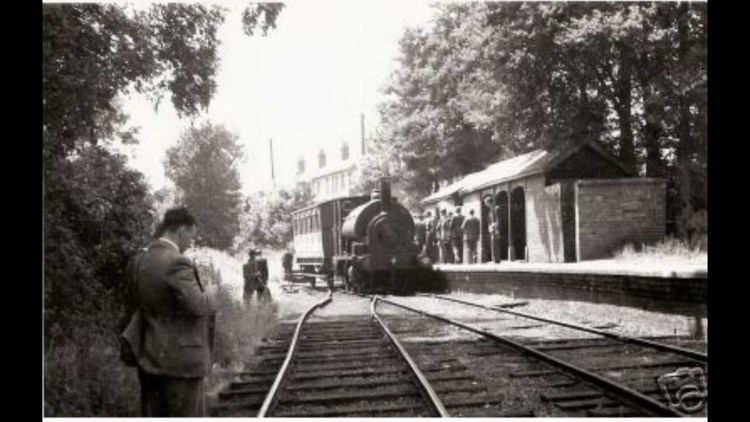
The CLR ran from a junction with the LTSR near Thames Haven to the Kynoch explosives works at Shell Haven, with branches east to Kynochtown (later Coryton) and west to Corringham.
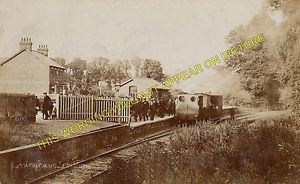
Corringham Station on the Fobbing Road was a substantial brick-built structure providing both male and female toilets, a bicycle shed and a small loading platform. Although the Light Railway order included a siding this was never laid. From the station the line headed down hill past two sidings, The first branched off towards a small brickworks and the second to a sewage works. Both were closed and removed before 1923. At the bottom of the incline the line crossed a bridge before heading across the marshes towards the works/LTSR it crossed the A1014 Manorway for the first time at Ironlatch crossing before heading straight for around a mile. At this point the line divided into a triangular junction with the LTSR and to Kynochtown/Coryton. The station at Kynochtown/Coryton was built in a similar style to Corringham but was built from wood. Originally the station was on a dead-end siding meaning that a train, once loaded, would have to reverse out to allow the locomotive pass to the front of the train.
On 20 September 1971 the CLR company became part of the Mobil Oil Company, serving its Coryton Refinery.
Closure and Remains
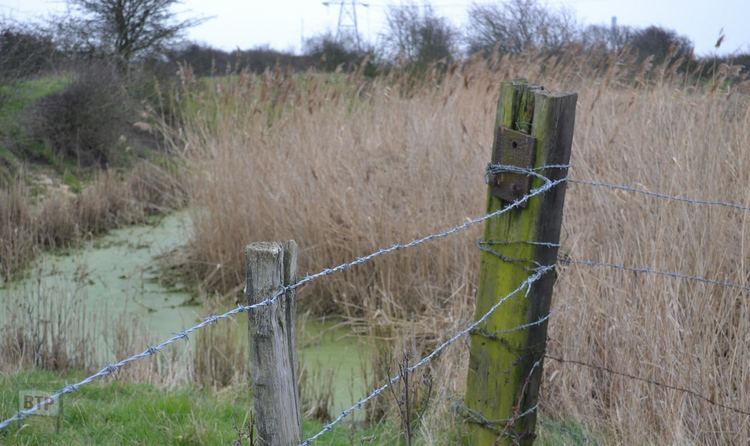
After the refinery transferred to Vacuum Oil Company, later Mobil, improvements were made to the branch that entered the refinery. The last passenger train ran from Corringham station on Saturday 1 March 1952 at 12.20pm. By 12 April of that year, Corringham station and branch were noted as having been demolished.
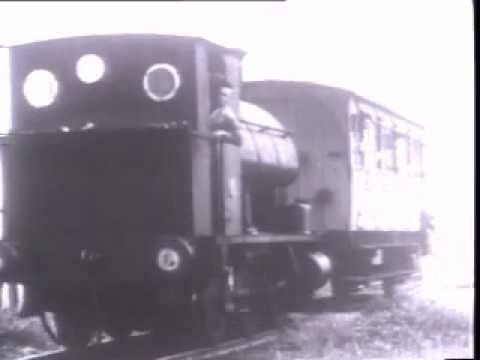
The site of the station on Fobbing Road is apparent from the satellite view of postcode SS17 9DB. The trees that lined the track as it ran north and curved westward into the station are still present. The top end of the trackbed up to public footpath 22 including the platform and loop was sold to a housing developer in 1986 The rear of the station site (Behind the platform)became The Hawthorns estate: the rear of the brick platform is visible from The Hawthorns, behind "Station House" on the right. A series of fishponds now lie on the trackbed through the station site. The gate post on Fobbing Road at the entrance to the station is still there, just across the road from Kynoch Villas and Digby Road.
Along the track bed there are various earth works and remaining structures, the first of which is the sewage works that once served the works colony (originally served by its own siding), The second of which are the large ponds in the grounds of the Pegasus club, these are the remains of the once rail served brick works. Finally there are the remains of Brickfield Bridge over Fobbing Creek.
At the site of Coryton Station the 1919 brick platform extension survives within the refinery and was restored cosmetically by BP in 1985 however the wooden waiting shelter/toilets have long since disappeared . Coryton station is an anomaly as usually a station is demolished when its railway closes, however the whole village of Coryton was demolished in the 1970s while leaving the station as intact as it was when the last trains ran.
Various items have survived in private hands, mainly tickets and photographs. A brick from Corringham station was rescued by an enthusiast and was subsequently incorporated into the wall of his home office. A fishplate was discovered in June 2013 after recent ploughing had uncovered it . One piece of rolling stock was also almost preserved: the final LTSR carriage was donated in the 1970s to Railway Vehicle Preservations, who are now based on the Great Central Railway. Unfortunately it was later destroyed by fire, though one door survived in a private collection. The door was restored as far as was practical and in 2012 was donated to the East Anglian Railway Museum (www.earm.co.uk) where it now features in the Carriage and Wagon display.
Locomotives
After the steam locomotives were scrapped the line was worked with diesel locomotives owned by Mobil Oil. However, there is no evidence that internal combustion locomotives ever ventured on to the Corringham branch before it was taken up in the 1950s.
Kynite was scrapped by T Ward and sons of Grays and the two Avonside locomotives were scrapped by Ray of Southend.
Although no steam locomotive that ran on the Corringham Light railway was preserved, the National Railway Museum has the works plate from Kynite on display in the works display and also ownes a fine example of the Avonside B4 class (same as locomotives 2 and 1) in "Woolmer" Works No 1572 of 1910, currently on display at the Milestones Museum in Basingstoke interestingly this as with CLR No 1 has a military origin, having run on the Longmore Military Railway in Hampshire.
Rolling stock
For the opening two "toastrack" carriages were supplied by Kerr Stuart, a 1st/3rd composite with the 1st class area enclosed and a 3rd class all open, described as very modern and akin to the trams on Southend pier at the time. Initially only one carriage was used at a time as the Kitson locomotive was unable to draw two loaded carriages up the incline to Corringham. Later the composite carriage was fully enclosed and curtains were added to the 3rd class carriage because of the harsh weather on the marshes. By 1905 by a four-wheel 3rd class carriage of LTSR origin was added.
They were modified by the removal of the compartment partitions and the addition of a handbrake at one end acting on one wheel set. During the First World War three bogie carriages of Midland Railway origin were acquired due to a further influx in staff to Thames works, In addition several more four wheel carriages where acquired from the LTSR. From the 1920s the passenger stock was reduced with the scrapping of many of the carriages acquired during the World War I, It was noted that at least one of the bogie carriages continued to be used past this time. Towards the end of the passenger service on the railway one or two ex-LTSR four-wheel carriages continued to be used, as noted on a Stephenson Locomotive Society visit in 1948.
Freight stock varied between two and 14 wagons. Little is known about them, but there is photographic evidence of two four-wheel wagons, one regularly at Corringham and an ex LBSCR open wagon. There are many photographs from the later years of the CLR that show wagons belonging to Cory Brothers in use or dumped in derelict condition. However these do not appear to have ever been owned by the railway itself.
Staff
Although the CLR had directors and several secretaries over the years, it listed very few staff on its books. Kynochs (and later Cory's) kept costs down to a minimum by counting only the locomotive crews (ie the drivers and firemen) as actual employees of the CLR. Like many aspects of the CLR, not much has been recorded of them.
Later staff were direct employees of Mobil.
Corringham Light Railway Society
The Corringham Light Railway Progect was founded in 2013 by a group of local people attempting to save the remaining trackbed of the Corringham Light Railway. Unfortunately time has not been kind to what remains and the Corringham Light Railway,In December 2014 the Corringham Light Railway Society was formed by former members of the project it now aims to research and discover as much as possible about the old line and if possible assist in the preservation of any remaining artifacts.
The Society's secondary aims are to preserve the general railway History of the Thurrock Area in conjunction with other groups.
